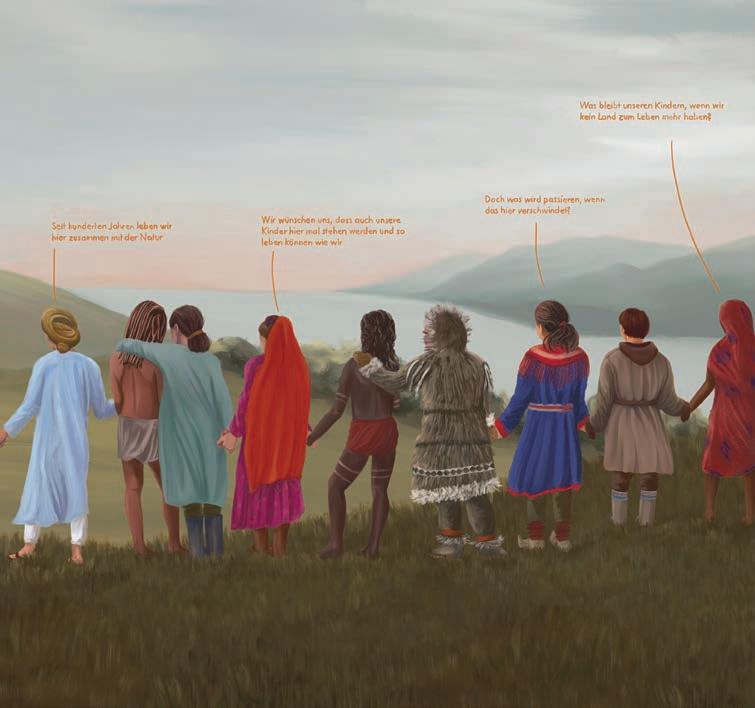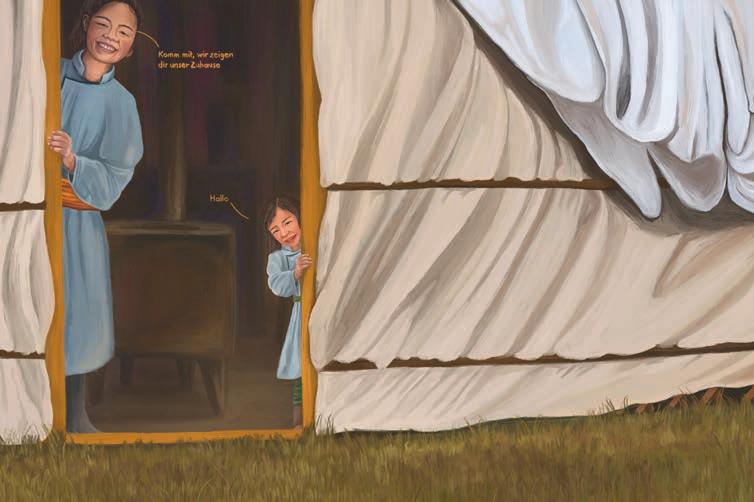
2 minute read
Germany Caroline Reissner
NOMADIC CHILDREN Caroline Reissner
Nomadic Children is a 56-page children’s and young adults’ non-fiction book that explores different cultures and related ways of life around the world. Many people live in a way that they do not call the land their own, believing instead that the world cannot be owned but only shared and used. Nomadic cultures are found in countries where the soil is infertile or the climate does not permit farming.
Advertisement
The barrenness of the landscape forces peoples to continually migrate. The individual family groups usually migrate seasonally, together with their livestock and possessions, for the purpose of grazing. Many nomadic peoples follow the migration of their animals. The introductory chapter of the book Nomadic Children first provides an overview of the life of nomads. This is followed by five chapters on the steppe, the sea, the desert, the ice and the forest.
The last chapter points out the conflicts and problems facing the individual nomadic groups. For most nomads it has become almost impossible to maintain their culture in its original form. For example, for nomads and other pastoralists, grazing land is particularly important, but due to the ongoing privatisation of land, nomads are being pushed back further and further and are deprived of the possibility to maintain their way of life. At the same time, climate change is making nomadic life more difficult.
Growing up in Bavaria, the land of The Blue Rider (Kandinsky, Macke, Franz Marc CAROLINE REISSNER is was inspired early by the fantastical picture world of this lake and mountain landscape. After successful years in the field of communication and media design in Munich, she started working as a freelance artist in 2016 and has been enrolled since then at the HAW in the Illustration Design Department. In 2019, during a semester abroad at the Griffith University in Brisbane/Australia, she discovered her love for fantastic natural worlds and the small hidden details. www.caroline-reissner.de
JURY REPORT An imaginary present, constructed like a stage set, gives rise to worlds beyond industrial civilisation. The gesture of the mother and daughter welcome us and seem to ask us: ‘Do we really (still) exist?’ The dynamic perspectives open our eyes. Once vertically from above, like a bird engaging in a conversation with the nomadic children, very immediate. Back in the horizontal, we see the children from behind, we join them in asking: Has our globe not long since finished with this diversity? The images disagree. An apparently unreal simultaneity that corresponds with a magical-realistic style. Earthy, warm colours in digital painting manage without bold outlines, create warmth and proximity – and optimism.












